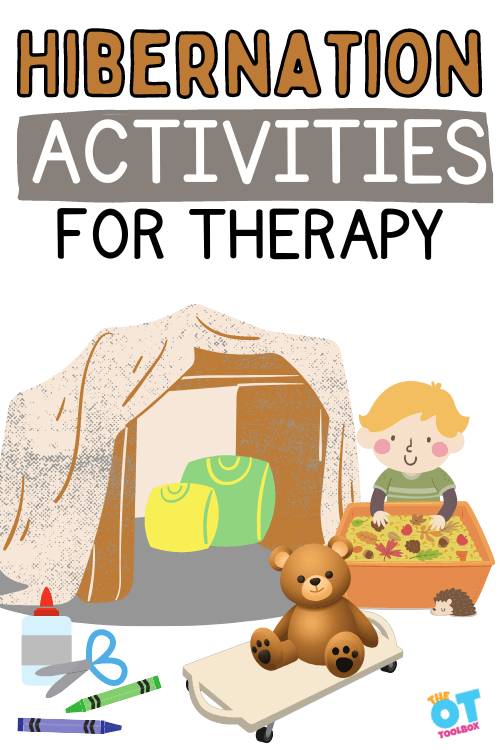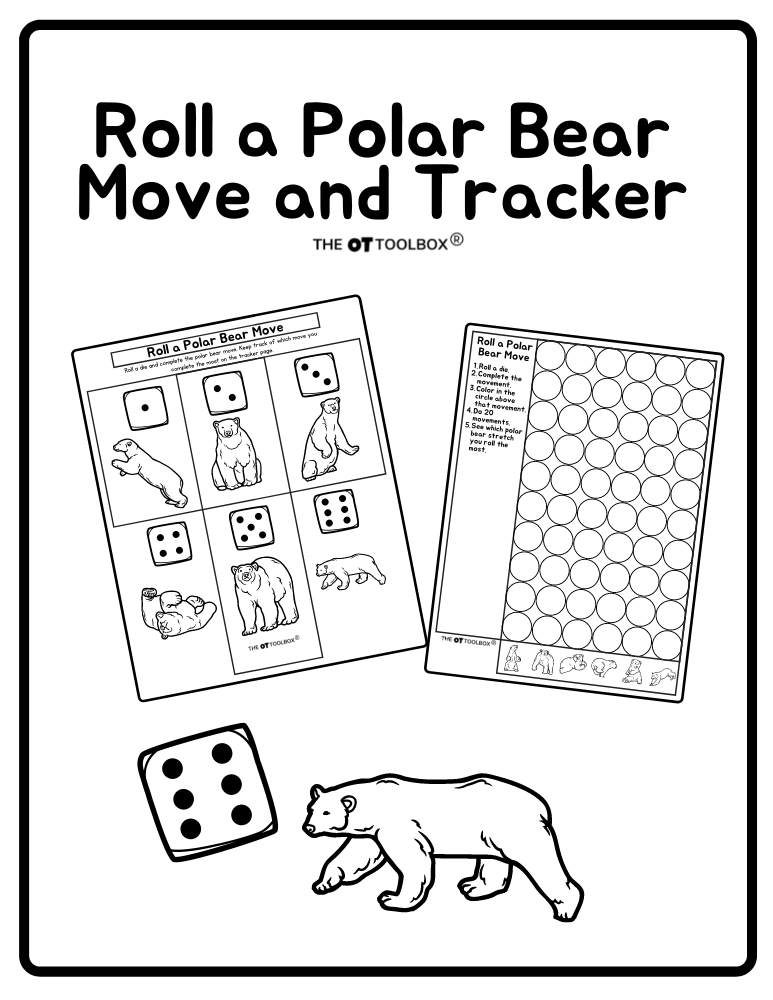When it comes to managing the long winter with activities, this winter number tracing worksheet has you covered. Be sure to read up on our recommended use of tracing sheets as a tool to support functional writing. Use the printable below along with our winter number tracing worksheet to talk with kids about winter clothing AND work on number formation. It’s a winter printable that you’ll want to add to your therapy toolbox! Also be sure to grab our winter crossword puzzle and our winter clothes worksheet (for visual perception) as a tool to build visual motor skills.
You’ll want to grab this winter worksheet because it covers number formation and writing numbers with a wintery theme!
Kids also love this mitten printable to race the mittens across the page whild building motor skills.
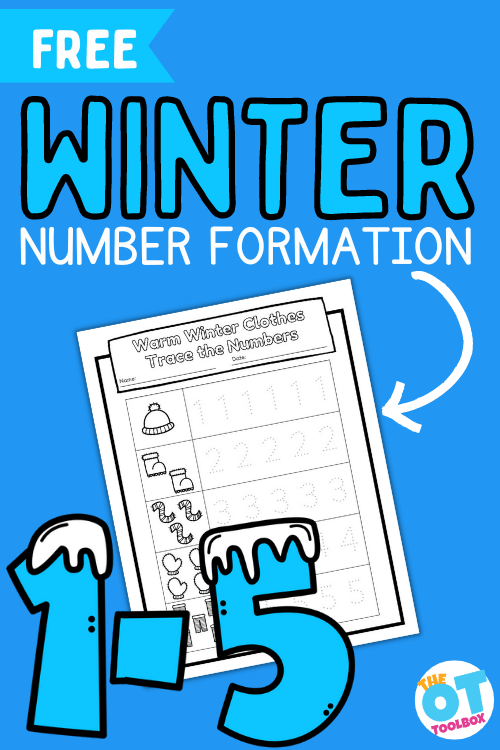
Free Winter Number Tracing Worksheet
On the winter worksheet, you’ll find number writing spaces where the user can trace numbers. By practicing numbers through tracing, you give the user the opportunity to practice the motor plan needed to form the number. We talk about the occupational therapy provider’s perspective on tracing in our resource on tracing sheets. Specific for this winter clothing activity, we wanted to add the number practice option along with a few other ways to practice specific skills.
This winter number tracing worksheet is similar to our recent Christmas lights number tracing printable.
Winter means different things for different people depending on their climate. Winter in the southern United States means adding a sweatshirt, possibly a hat at the bus stop early in the morning. In the northern states winter is a different story. Up north, winter starts in mid- September and seems to last until May. I have northern roots but am a southern girl by heart.
Winter months in cold areas of the world mean bundling up and adding clothes. Mittens, hats, coats, snow pants, boots, gloves, earmuffs, thick socks, long johns, and lots of layers are the customary daily garb. Imagine trying to put this on and off a toddler each time you head out! As soon as you get your child decked out in all these layers, they usually announce the need to go to the toilet! It never fails.
Since bundling up is a daily chore in the frozen north, why not add it to your treatment plan? The Warm Winter Clothes Number Trace Worksheet is a cute printable to build essential skills while using meaningful, relevant content.
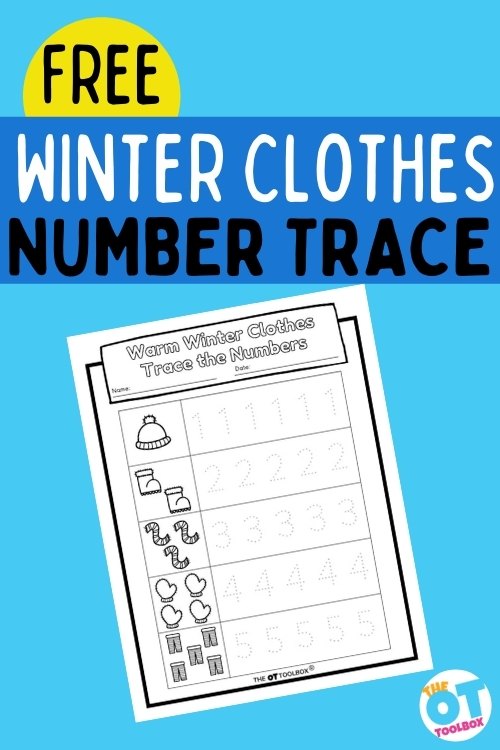
Tracing Numbers Worksheets
Let’s talk tracing so you can use it to the maximum benefit and its intended purpose.
I am not a fan of tracing unless it is used correctly, or the objective is understood. Here is information on the benefits of tracing.
- Tracing is not going to teach number/letter formation if the learner does not know what those figures are. To a learner who does not know these symbols, they will be tracing lines, not numbers or letters
- Know your audience. If your learner does not know the letters or numbers, use the activity as a fine motor task to develop dexterity
- Kinesthetic awareness. This long word means to learn by doing. Theoretically if a person writes the number 5 enough times, the body will start to recognize this pattern and commit it to memory. This only works if the learner understands what is being traced. Using our sandpaper writing trick is one great way to incorporate kinesthetic awareness into number tracing and number formation.
- Tracing for dexterity. This is the type of tracing I like best. Tracing for dexterity works on staying on the lines, fine motor control, building hand muscles, scanning and a whole host of other important skills as defined below
Winter Clothes Worksheet
While worksheets are not a favorite among occupational therapists, there are ways to support skill areas by using worksheets to meet the needs of kids. When we address the underlying skill areas to support function, printables like this winter clothes worksheet can address a variety of areas.
What does this winter number tracing worksheet work on besides tracing?
- Kinesthetic awareness – This means learning by doing.
- Hand strength and dexterity – staying on the lines builds hand muscles and develops muscle control. Check out the In Hand Manipulation Printable Worksheet to incorporate developing the intrinsic hand muscles.
- Visual motor skills –Combining what is seen visually and what is written motorically. This takes coordination to be able to translate information from visual input to motor output. Coloring, drawing, counting, cutting, and tracing are some visual motor skills.
- Visual Perception – Developing figure ground to see where one item start and finishes, scanning to find all answers, and visual closure to understand that dotted lines will create something.
- Strength – Core strength needed for sitting, shoulder/elbow/wrist stability, finger strength, and head control all play their role in writing.
- Bilateral Coordination – Be sure your learner uses their helper hand for stabilizing the paper while using their dominant hand for writing.
- Counting/Learning Numbers – Count the items to understand number concepts in addition to tracing them.
- Social/Executive Function – Following directions, turn taking, task completion, orienting to details, neatness, multi-tasking, attending to task, and impulse control can be addressed using this Warm Winter Clothing Printable PDF.
When using a task such as this number tracing worksheet, therapists can utilize and focus on all the above skills or just one or two. There are times when I am working more on executive function than fine motor skills but will use this task with more of my focus on these executive function skills. My note might not say much about their number formation, counting skills, or neatness, but how well they were able to attend to the task, complete the task, follow directions, and control their impulses.
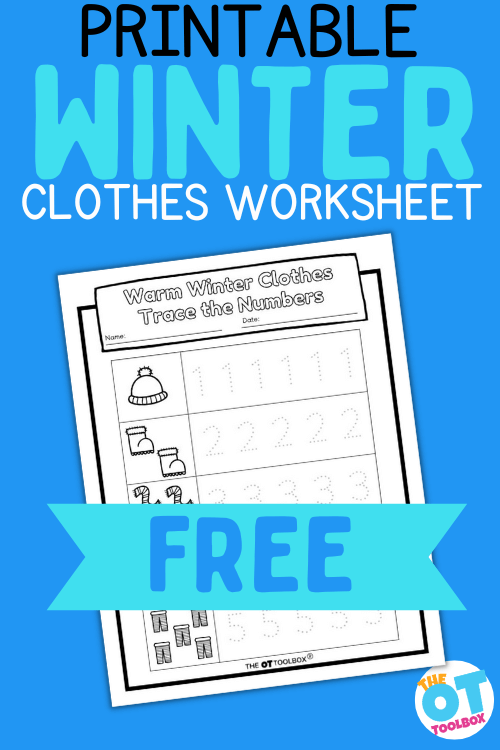
Winter Clothing Printable
There are so many ways to use this winter clothing printable to work on number tracing, and more.
How do I incorporate or modify this task for the needs of all my learners?
Lots of ways! As always, this sheet can be laminated for reusability or marker use, printed on different colored paper for readability, enlarged or made smaller, made simpler or more complex. Try having learners color the shapes and write the numbers independently on the back to add more visual motor tasks to this winter clothes worksheet.
This covers one day of winter, what about the other 240?
Glad you asked! The OT Toolbox is stuffed with activities, blog posts and work pages to fill those winter days. The Winter Fine Motor Kit full of handouts and PDF files provides several visual motor tasks to be used throughout the winter season.
Plus, in The OT Toolbox Members Club, you’ll find winter clothing printables and resources to address a variety of needs.
In addition to these handouts, you can also read this article on Winter Fine Motor Activities for more great ideas and suggestions:
Winter is a very long season. Especially if you are not a fan of the cold weather (author raises hand). Adding fun activities and games can take some of the monotony and sting out of the long cold days.
Brrrrrr, bundle up!
Free WINTER NUMBER TRACING WORKSHEET
Want to access this printable number tracing worksheet? Enter your email address into the form below. You can also find this winter clothing printable in The OT Toolbox Member’s Club.

Victoria Wood, OTR/L is a contributor to The OT Toolbox and has been providing Occupational Therapy treatment in pediatrics for more than 25 years. She has practiced in hospital settings (inpatient, outpatient, NICU, PICU), school systems, and outpatient clinics in several states. She has treated hundreds of children with various sensory processing dysfunction in the areas of behavior, gross/fine motor skills, social skills and self-care. Ms. Wood has also been a featured speaker at seminars, webinars, and school staff development training. She is the author of Seeing your Home and Community with Sensory Eyes.
Watch for more winter clothes worksheets and winter printables coming to this space.


